The Historical Background on John Muir House
Nestled in Martinez, California, stands a testament to one of America’s most influential naturalists—John Muir. The house, originally constructed in 1882, was the brainchild of Dr. John Strentzel, Muir’s father-in-law.
Dr. Strentzel was a man of vision, and his home reflected that vision in every brick and beam. When he passed away in 1890, his daughter and son-in-law, John Muir, moved into what locals affectionately call the “big house.”
The house wasn’t just a residence but a sanctuary for Muir, who lived there for the last 24 years. Here, he penned some of his most influential works, advocating for preserving America’s natural beauty. The house served as both a family home and a hub of intellectual and conservationist activity, making it a focal point in the community.
The mansion is a 17-room marvel designed in the late Victorian period, specifically in the Italianate style. This architectural choice was popular among the affluent of the time, and the house was no exception. With its intricate woodwork and expansive rooms, it was a symbol of both elegance and comfort.
Today, the house is a John Muir National Historic Site, drawing visitors keen to step back in time and into his life. It’s not just a house; it’s a slice of history, a glimpse into the past, and a tribute to a man who changed how we see the natural world.
Architectural Features
The house’s architectural brilliance is evident when one sets foot on the property. Designed by the renowned architects Wolfe and Son of San Francisco, the mansion was constructed by Sylvester and Langabee, contractors from the same city. The collaboration resulted in an aesthetically pleasing and functionally sound structure.
One of the most striking features of the house is its two-story structure, complete with a full basement and attic. The dome on the roof’s peak adds a touch of grandeur, making the house stand out in its surroundings. The house covers over 10,000 square feet of floor space, making it one of the most expansive residences of its time.
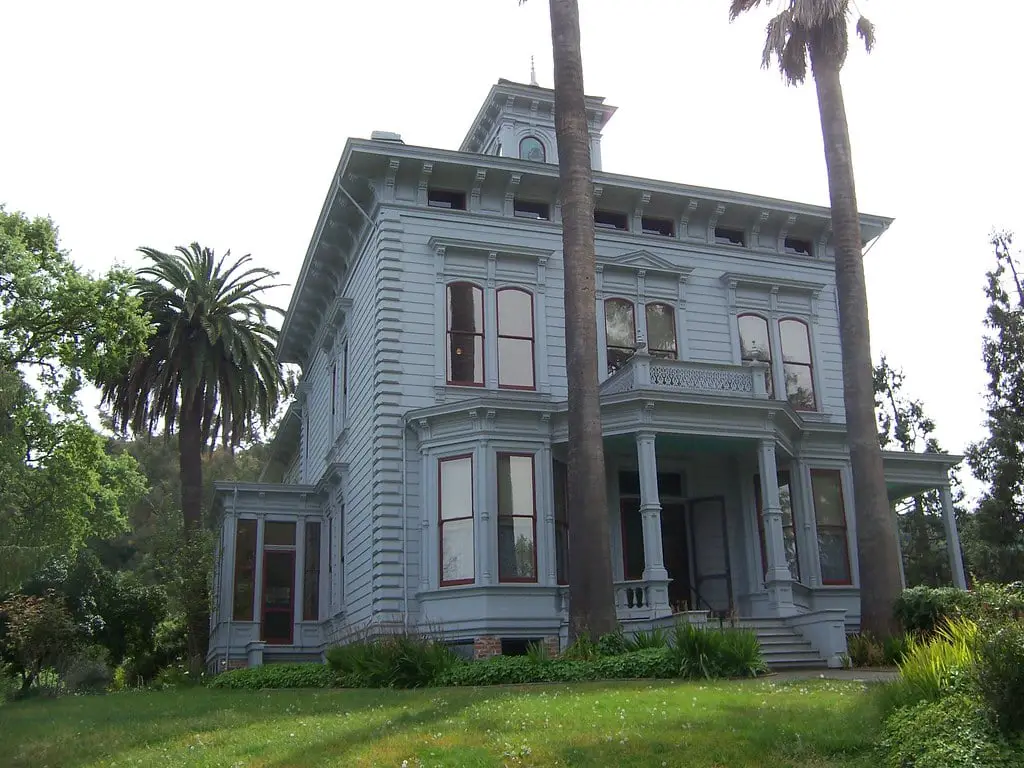
The exterior is just the beginning; the interior is equally impressive. High ceilings that reach up to 12 feet give the rooms an airy, spacious feel. The woodwork, a hallmark of Victorian architecture, is intricate and adds to the overall elegance of the house.
The John Muir House offers a rich experience for those who appreciate architectural history. It’s not just about the bricks and mortar; it’s about the vision that went into creating a home that would stand the test of time. It’s a living museum, each room telling its story, each corner whispering secrets from the past.
John Muir House Interior Details
Stepping inside the John Muir House is like taking a journey back in time. The first floor is a maze of rooms with unique purpose and design. The entrance hall welcomes visitors with its grandeur, leading them to a formal parlor perfect for social gatherings. Adjacent to it is a library with a partially enclosed porch, offering a cozy space for reading and reflection.
The family parlor provides a more intimate setting, and it’s easy to imagine Muir discussing his latest writings or conservation ideas here. The dining room with an attached conservatory offers a panoramic view of the surrounding landscape, making mealtime a scenic experience. Though updated to meet modern standards, the kitchen retains its old-world charm.
The second floor is equally captivating, featuring six bedrooms, a water closet, and a bathroom. Three of these bedrooms have been restored to their original state, offering a glimpse into the Muir family’s life. One large bedroom was converted into a study by Muir and has been maintained as such, filled with Sierra Club material and other historical artifacts.
The house initially boasted seven imported Italian marble fireplaces, a luxury. Today, only three remain, but they are a sight to behold. Two others were converted to brick, and two were removed, but the remaining ones offer a warm, inviting atmosphere, especially during the colder months.
Technological Advancements
In an era when most homes were devoid of modern conveniences, the John Muir House was ahead of its time. Built at over $20,000, the house featured indoor plumbing and gas lighting considered luxuries in the late 19th century. Water for the indoor plumbing was ingeniously collected from rainwater or pumped from one of the three wells near the house.
A telephone was installed in the house as early as 1885, connecting Muir to his neighbors and the world. This man believed in embracing technology, but only if it improved the quality of life without harming the environment. In keeping with this philosophy, an electrical system was installed just before Muir died in 1914, making the house one of the first in the area to have electricity.
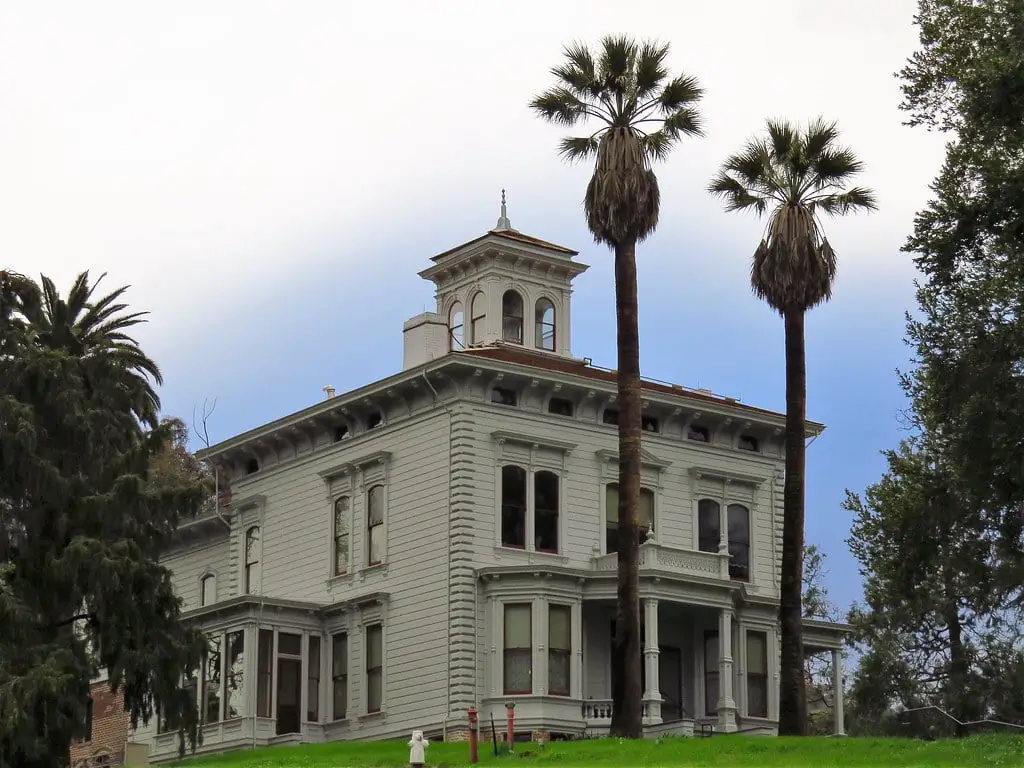
The house also featured a large steel water tank in the attic, supported by a three-story addition to the back of the house. Muir added this after 1890, and was an innovative solution to the home’s water supply needs. Any overflow water was directed to a large brick cistern under the kitchen floor, ensuring no drop was wasted.
In many ways, the house reflected Muir’s forward-thinking attitude. It blended comfort and convenience, built with an eye on sustainability. It stood as a model home, showcasing what could be achieved when man worked in harmony with nature.
Renovations and Changes
Over the years, the house has undergone minor and significant changes. Muir himself was responsible for some of these alterations. He opened up the two first-floor parlors with large archways, creating a more open and welcoming space. A smaller archway was also added to the dining room, enhancing the flow between the rooms.
Following the devastation of the 1906 earthquake, which ruined the original fireplace in the family parlor, Muir commissioned the construction of a grand mission-style fireplace. This served a functional purpose and added a touch of rustic charm to the room. These changes were more than just aesthetic; they reflected Muir’s evolving relationship with his home and environment.
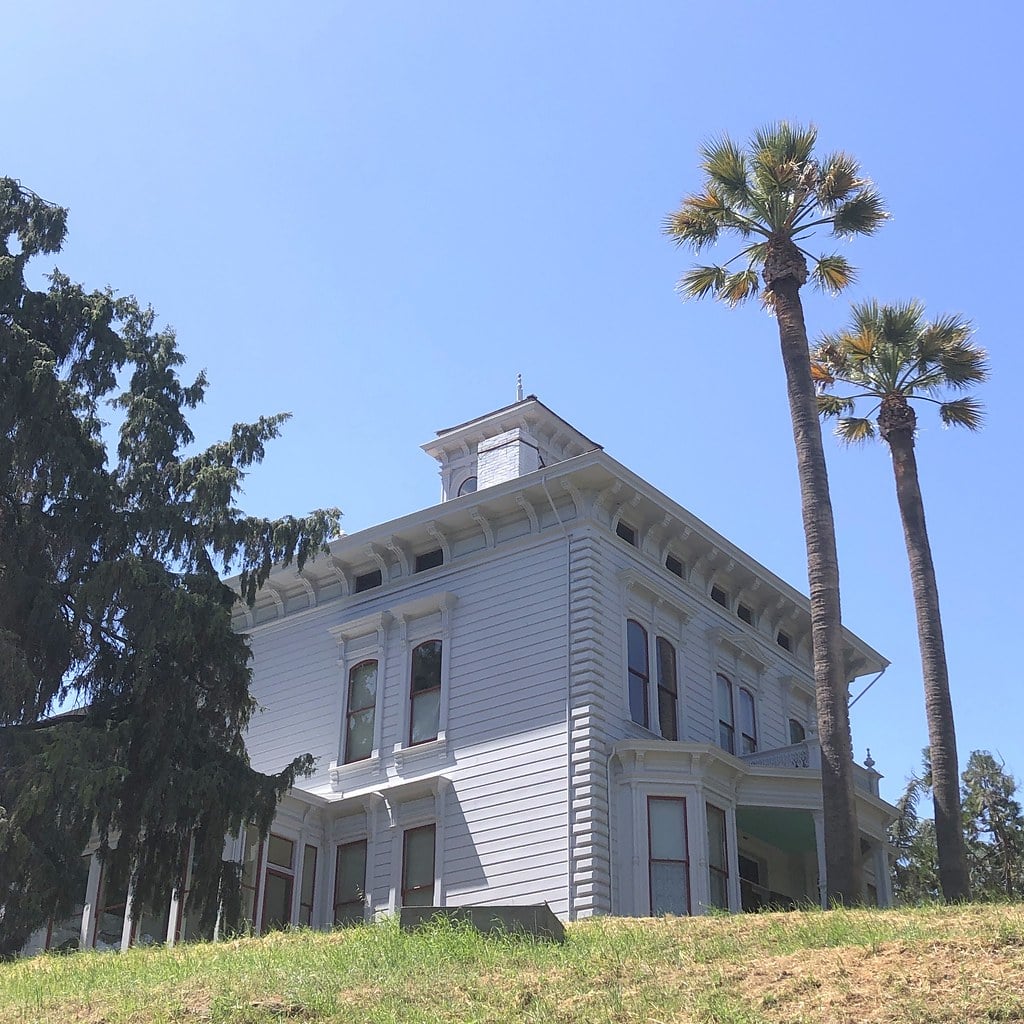
The house’s structure has remained largely unaltered since Muir’s time, thanks to the efforts of the National Park Service. Ever since the designation of the house as a National Historic Site in 1964, continuous restoration efforts have been underway. Authentic period furniture and artifacts have been incorporated, along with replicated wall and floor treatments and artwork to mirror the era.
Visitors today will find that the house has been lovingly preserved, almost as if Muir himself might walk through the door at any moment. It’s a living, breathing piece of history, a tribute to a man whose legacy inspires generations.
The Surrounding Landscape
The house is a marvel, but the surrounding landscape is equally captivating. Perched on a knoll, the mansion offers a commanding view of the Alhambra Valley. It’s a vista that Muir himself cherished, often writing about the beauty of the rolling hills and the serenity of the natural world around him.
Adjacent to the house are tracts of native oak woodlands and grasslands, once owned by the Muir family. These lands have been preserved and are now part of the John Muir National Historic Site. The site has been enlarged twice by the John Muir Land Trust, adding 325-acre Mount Wanda in 1992 and 44-acre West Hills Farm in 2015.

The landscape is not just a feast for the eyes; it’s a haven for nature lovers. Walking trails crisscross the property, offering stunning panoramas and an opportunity to connect with nature. The sights and sounds of thriving wildlife habitats add another layer to the experience, making each visit unique.
The landscape also offers that opportunity for those who wish to reflect on the area’s rich history. In 1853, Edward Franklin, a pioneer from the Gold Rush era, acquired a two-story adobe ranch residence from Vicente J. Martinez. This historical structure remains visible within the boundaries of the park today. It’s a walk through history, a journey through nature, and a tribute to a man who loved both.
The National Park Service and Preservation
Since being declared a National Historic Site in 1964, the John Muir House has been under the care of the National Park Service. Their involvement has been instrumental in preserving the house and its surrounding landscape, ensuring it remains a place of historical and natural significance.
The National Park Service has undertaken several restoration projects to maintain the house’s original character. These efforts have been meticulous, focusing on authenticity and historical accuracy. The result is a house that looks and feels as it did during Muir’s time, offering visitors a truly immersive experience.
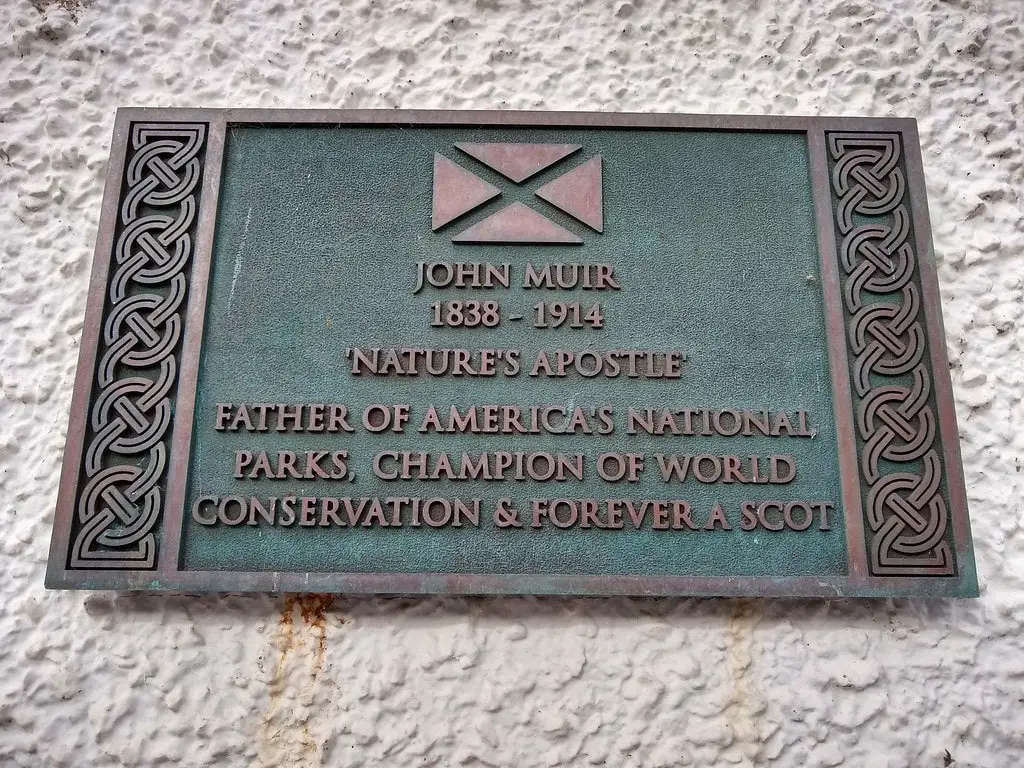
The Park Service has also been proactive in educational outreach, offering various programs and events to educate the public about Muir’s life and work. From guided tours to interactive exhibits, the aim is to make history come alive to make conservation a tangible concept visitors can take home.
The house and its surrounding lands are more than just a tourist attraction; they’re a living classroom where history and nature coexist. It’s a testament to the vision of the National Park Service and its commitment to preserving America’s natural and cultural heritage.
John Muir House Current Status and News
As of the latest update in July 2023, some John Muir National Historic Site areas are closed to the public. Situated on the western boundary of Muir’s historical orchard, the Martinez Adobe is currently off-limits to the public because of structural issues. The timeline for its reopening is still uncertain.
Additionally, the Riparian trail is also closed due to safety concerns. This trail is halfway up the Mount Wanda Fire road, past the Nature Trail. Visitors are advised not to access this trail until further notice as the Park Service works to address these issues.
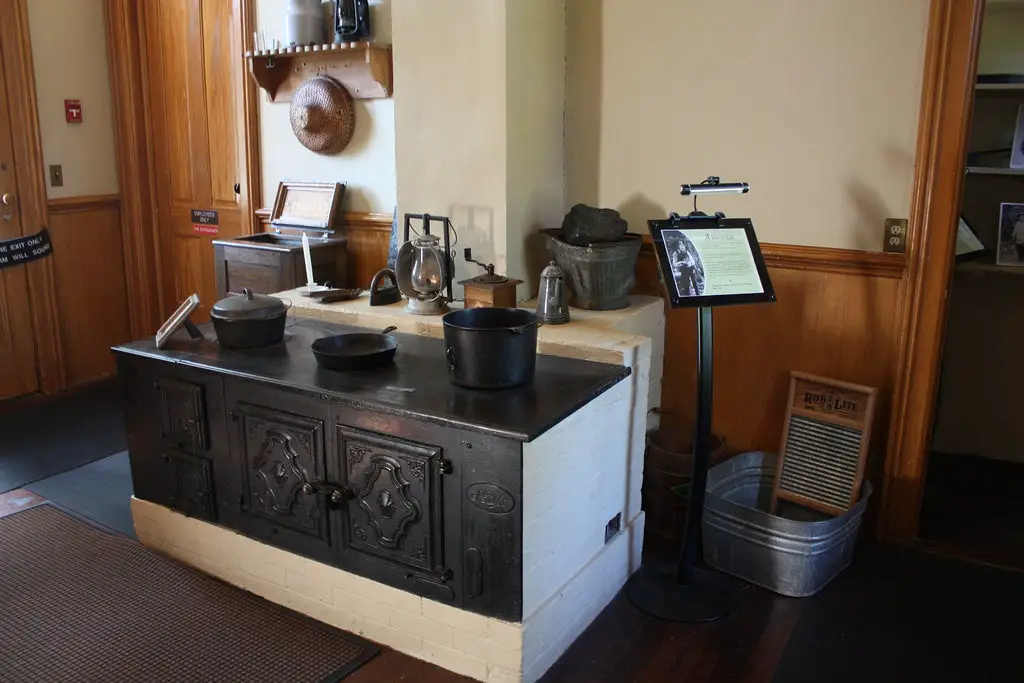
Despite these closures, the Muir/Strentzel mansion remains open to visitors, offering a glimpse into the life of one of America’s most influential naturalists. The house continues to draw visitors from near and far, serving as a beacon for those interested in history, architecture, and conservation.
While some areas may be off-limits, the essence of the place remains unchanged. It’s a sanctuary, a piece of history, and a tribute to a man whose legacy continues to inspire. It’s a reminder that even in our fast-paced world, there are places where time stands still, history lives on, and where the beauty of nature is just a step away.
The John Muir House: A Sanctuary in the Heart of Martinez, CA
The John Muir House in Martinez, California, is more than just a house; it’s a journey through time, a walk through history, and a step into the natural world. It’s a place where the past meets the present, nature meets nurture, and every visitor leaves with a newfound appreciation for the beauty surrounding us.
The National Park Service has done a commendable job preserving this historic site, ensuring it remains a place of learning, reflection, and inspiration. From the architectural brilliance of the house to the natural beauty of the surrounding landscape, every aspect has been carefully maintained.
For locals who have lived in the area, the house is a nostalgic trip down memory lane, a reminder of a simpler time when nature was not just a backdrop but a way of life. For newcomers, it’s an invitation to explore, learn, and be inspired.
So, if you find yourself in Martinez, take the time to visit this remarkable site. Walk the halls where John Muir once walked, gaze upon the landscapes he loved, and take a moment to appreciate the beauty around us. It’s an experience that will stay with you long after you’ve left, a lasting tribute to a man whose spirit lives on in every stone, every tree, and every breath of fresh air.

Went there first time in 1965 when I was 7 years old, my favorite room was the attic. Went again 40 years later and was happy to see that absolutely nothing was different or changed. I liked peeking under the bathroom sink cabinet on the 1st floor and seeing the original lead piping on my later visit
Thank you for sharing your unique experience with the John Muir House! It’s heartwarming to know that some things remain constant in a world of rapid change. Your story adds a beautiful layer to the history of the house.